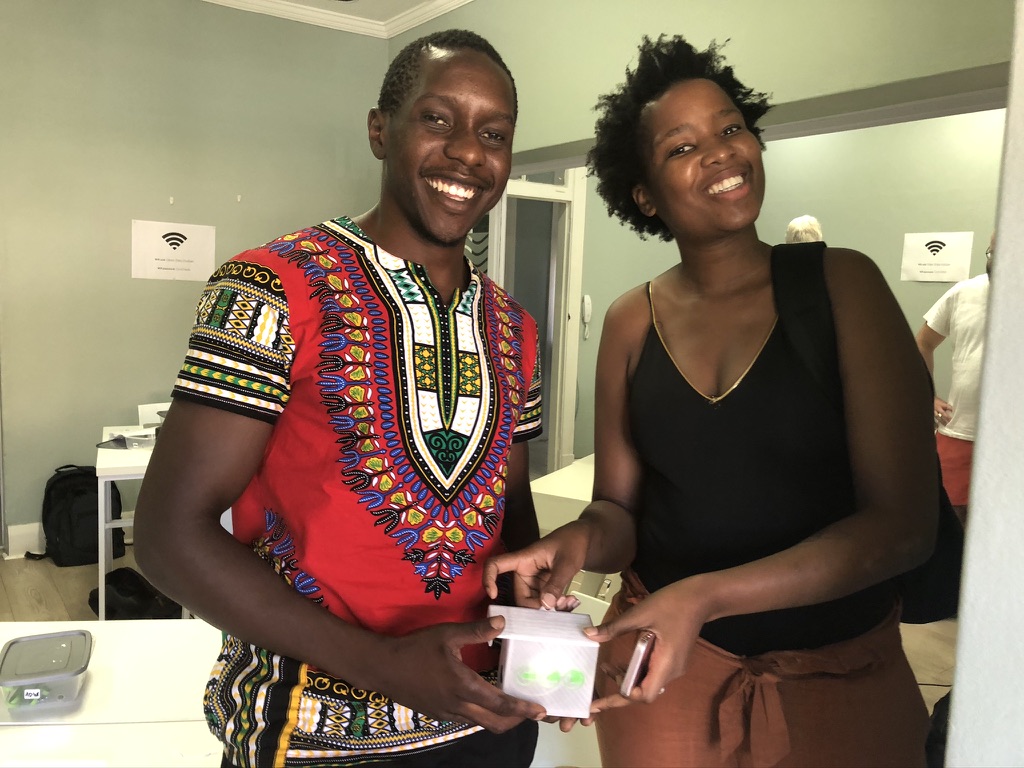On Saturday 7th March 2020, the tenth Open Data Day took place with people around the world organising over 300 events to celebrate, promote and spread the use of open data. Thanks to generous support from key funders, the Open Knowledge Foundation was able to support the running of more than 60 of these events via our mini-grants scheme.
This blogpost is a report from Open Cities Lab in South Africa who received funding from Datopian to create an open and accessible space for community scientists to meet, network and collaborate on an air quality project.
Open Data Day was an opportunity for Open Cities Lab to gather our collective of community scientists in one room to work on our air quality monitoring project. This project endeavours to create an open data platform on air quality in the city of Durban. Our data collection method has involved building low cost particulate matter measuring sensors.
Our sensor is made up of a small number of components, namely a Nova SDS011 PM Sensor which measures PM10 and PM2.5. This is connected via four F-F jumper cables to a NodeMCU 8266 board which holds the script and connects to a network to be able to send the data readings to the data platform. The NodeMCU board is powered by a Raspberry Pi plug. The first prototype was housed in a rectangular Tupperware container which has two holes drilled into opposite sides, one for the plastic piping that is connected to the Nova sensor, and one for the power supply cable.
These sensors have been disseminated and deployed through many channels via our community science curriculum, environmental justice community based organisations and hackathons where interested citizens build and become the custodian of their sensor. This growing community of air quality monitoring citizens connect and collaborate over our community sensors Slack channel. As the number of online sensors out in the field grew, we were able to analyse and hypothesise towards strengthening the reliability and integrity of the streams of incoming data.
We centred our Open Data Day event round addressing a number of challenges we’ve experienced on this project. We had a list of challenges, to which the solutions were able to be implemented and explored on the day.
Our first challenge was the Tupperware container that the sensors were housed in. No design process had been considered for an easy user experience install. One of our hosts volunteered his time to design a case that would optimise installs that take better readings.
These cases are 3D printed using PETG filament which is a strong plastic suitable for outdoor instalment, the case was also designed in such a way to minimise exposure to rain – users are still encouraged to install in areas sheltered from rain. On Open Data Day we invited hosts to bring their sensors to swap out the old container for the new containers.
We had some occupational health and safety scientists from Apex Environmental on board who brought through a Gilibrator Air Flow Calibration System for some calibration work on the sensors that were present on the day. We were able to gain insights on the mechanics of our Nova sensor component; for example, how long it takes to suck in air for each reading. We discovered that the code on the NodeMCU board was not allowing the Nova sensor component enough time to pull in a big enough air sample for each reading. During Open Data Day we were able to work on the sensors present and modify the code so that each reading was of a sizeable air sample.
On the day we also invited citizens who were interested in hosting a sensor to come and build a sensor that they can then take home to install. In this way, Open Data Day helped us to expand our network of sensors collecting data on the platform.
The turn out was a mix of people from different professional backgrounds who sat down to puzzle together sharing skills, knowledge and ideas. Citizens were encouraged to share their findings on the slack channel, so that the work may continue there after the event.
What was most special was the presence of a few students who are part of the community science class that we run in areas plagued by poor air quality. They were exposed to a real-life experience of what it truly means to be a community scientist, surely the greatest lesson of the curriculum. The end of the session left us with 15 empty old containers, exchanged for the new designed cases. There were 5 new sensors built that left with their new hosts to be installed in their homes.
Our work on calibration continues with what is yet to be seen from a comparison of PM value readings from sensors that collect on varying air sample sizes. Our homework collectively is to test installs in new cases – with the placement protocol advice from our Apex Environmental official which is to have the rubber pipe facing the hypothesised direction of inflow of bad air quality, help new sensor hosts with their home troubleshooting over our Slack channel, and further investigation on the airflow of the sensors to be able to define the calibration equation.
Our Open Data Day saw us cover important ground in our work towards a useful and reliable air quality platform for the people of the city of Durban. A successful day that will surely be recreated in the near future.










